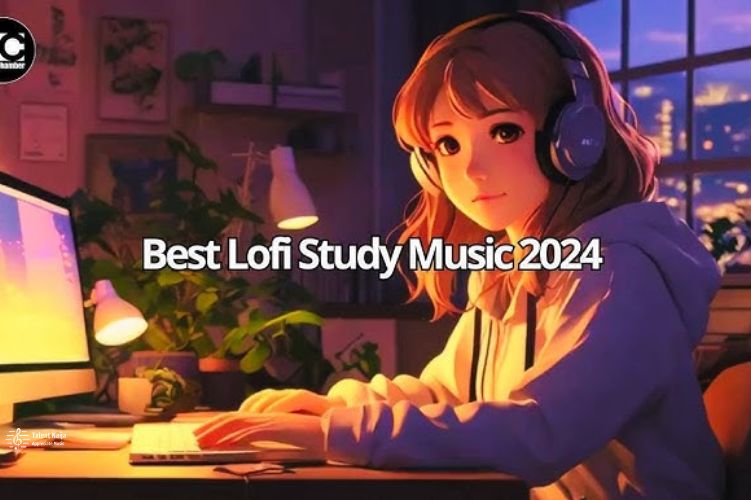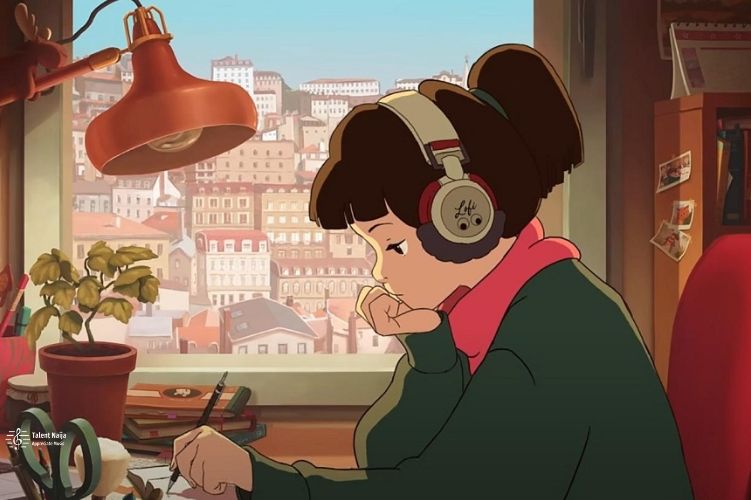Since I’ve been learning music production for seven years, I’ve seen the popularity of lo-fi hip hop beats grow by leaps and bounds. What began as a small YouTube trend has grown into one of the most common types of music heard on study tracks today. Read below about “How Lo-Fi Beats Are Taking Over Study Playlists in 2024”.
I’ll talk about why lo-fi music has been so popular with students and why it will still be the most popular type of music on study tracks in 2024.
Table of Contents
The Growth of Lo-Fi Hip Hop
In 2017, when I was just starting to make music, I almost found lo-fi hip hop by chance while looking for jazz hop compilations on YouTube. I came across ChilledCow’s live stream, which had soothing lo-fi music and anime-style images.
It was a strange but interesting mix. The music had an old-fashioned, dusty analog warmth, and the graphics showed cute people learning or drinking coffee. I quickly learned that these simple animated loops were a key part of the lo-fi scene. They captured the laid-back, study-friendly vibe.
ChilledCow showed the way, but soon there were a lot of other lo-fi channels. Soon, YouTube was full of dozens of live streams and compilations that got millions of hits and streams. But sets with beats like “lofi hip hop music – beats to relax/study to” got billions of plays.
The town was small but strong. As someone who wants to become a music producer, I looked up to lo-fi artists like J Dilla, Nujabes, and others who used old vinyl records to make rich hip hop beats. I started to play around with my own low-fidelity works in the time between lessons and uploads.
The year is 2024, and lo-fi hip hop is a big part of culture all over the world. What started in small parts of the internet has spread to most people. A lot of people watch the best low-fidelity study programs on YouTube every week. Over 100 million people have streamed some old songs.
It’s no longer just a trend; lo-fi has become an entire art scene and community. I’ve seen personally how it connected with students looking for a new musical escape because it was relaxing, made them think of studying, and came from the underground.
Why Students Love Lo-Fi Beats
I get why people like lo-fi because I’m a student myself. Having music that keeps you focused but doesn’t get in the way during long study sessions is very important. As someone who has worked with my peers, I can see why lo-fi hip hop has become so famous for getting things done:
Minimal Lyrics & Steady Tempo
Most lo-fi beats don’t have lyrics, unlike most hip hop or pop songs. Some songs use only a few sampled voice chops, but full lyrics are rarely used. Lo-fi music is great for learning or reading when you need to focus because of this.
Additionally, classic lo-fi music usually stays at a steady pace of 80 to 90 beats per minute. This steady beat helps students keep up a steady flow of work. Of course, lo-fi mixes have small changes to keep things interesting, but they’re never too big.
It helps me stay on task during long studio sessions as a student producer to keep this balance. The same thing happens when I have to do homework or study for tests. Lo-fi music has a soundscape that changes slightly, not loudly like other aggressive electronic music styles.
Warmth and Familiar Samples
Some people also like lo-fi because it has hip hop roots. A lot of the songs use samples from well-known soul, jazz, and funk hits from the 1960s to the 1980s. These make learning feel nostalgic, maybe because they make people think of the music their parents used to play.
The beats also sound cozy and worn-out thanks to lo-fi production methods such as vinyl crackle, tape hiss, and low quality filters. This adds a soothing sound that is easy on the ears for long amounts of time.
To get this old-school warmth, I often use samples of dusty old records and analog gear and software to process my sounds. The result is beats that sound like they’ve been used for a long time, which is great for studying.
Minimalist Visual Aesthetic
Lo-fi is known for its music, but the video streams that go with it have become just as important. As was already said, these animated loops usually show calm things like studies, the rain, or train rides.
The graphics, which look like simple pixel art, go with the laid-back mood. Some of them also have cute “mascots” that have become lo-fi icons, like goats, cats, or anime figures.
I like this simple style because I used to be interested in animation when I was in high school. The slowly panned scenery and characters go well with the soft music without being too much. This makes it possible for students to listen to lo-fi hip hop radio streams for hours on end.
Sense of Community
Even though lo-fi is popular now, it still makes people feel like they fit in a group. For bedroom producers like me, it’s a genre that lets amateur singers share their work without having to use professional studios.
The easygoing sound honors flaws. It tells people to ignore the flashy staging and enjoy the soulful music instead. This philosophy also speaks to students who are stressed out by trying to be great in school.
Lo-fi hip hop has also given rise to many online subcultures. There are active groups on Reddit, Discord, and other social media sites. As someone who wants to be an artist, these collective places have given me priceless feedback and support.
This sense of community comes through in the song itself. It feels like a joke between friends in this scene when I find hard-to-find lo-fi samples or references to old songs in new beats. Lo-fi music is a great way for students who are stressed out by homework to relax.
How Lo-Fi Continues Dominating Study Playlists
Lo-fi hip hop has become one of the most popular types of music on study playlists because students can relate to it on many levels. Based on how it continued to change in 2024, I think this learning buddy will continue to do well for a while by following these trends:
Read More Collaborations in the mainstream
Even though lo-fi is still a small group, it’s clear that it’s made its way into mainstream culture. Big acts like Mac Miller, Joji, and even Nujabes have used samples from old lo-fi songs. On TikTok, too, lo-fi versions of well-known songs have gone viral.
I think that underground lo-fi musicians and well-known artists will work together even more in the future. These bridges help new artists get noticed and show popular audiences where hip hop’s laid-back sound came from.
Changes in Subgenres
Lo-fi hip hop has grown a lot since its beginnings. Producers keep pushing the style into new areas, which creates new subgenres. There is now lo-fi house, lo-fi R&B, lo-fi funk, and even lo-fi music that is only electronic.
These new ideas keep the game interesting. If students get tired of the same old hip hop songs, they can find totally new sounds. However, their simple and nostalgic cores are still there.
I’ve been adding ambient and IDM elements to my own songs lately. Modern recording tools give you almost endless sound options while keeping the heart of lo-fi’s churning analog sound. They have a lot to look forward to!
More Immersive Experiences
Lastly, technology keeps making lo-fi songs better themselves. With the help of VR and the metaverse, simple YouTube streams have turned into multisensory journeys.
Students can hang out with other students online in cool low-fi areas thanks to sites like Wave and ChillAbra. People who listen to these beats can also get lost in the relaxed world of ambient visualizers and reactive visuals.
As virtual worlds get better, lo-fi will be able to help people learn in a more realistic way. Lo-fi will soon allow students in 2024 to study in virtual hip hop lounges, record shops, and natural settings. How cool is that?
Here’s to You
As a student and artist who grew up during the meteoric rise of lo-fi hip hop, I can personally attest to why these smooth beats work so well as study music. They’re understated but interesting, retro but up-to-date, and cozy but open.
I don’t think their fame will fade any time soon. Lo-fi still has a huge amount of room to grow into even more ways to help students stay cool and focused. I hope you like reading “How Lo-Fi Beats Are Taking Over Study Playlists in 2024”.
What do you think? Does lo-fi also help you get things done? What do you think will happen to this subject in the future? Share your thoughts below!

With a Master’s degree in Musicology and over 4+ years of experience in promoting musical talent, our author brings a blend of academic expertise and real-world insights to TalentNaija. Passionate about showcasing diverse musical genres, emerging artists, and industry trends, they provide practical tips and authentic experiences for music enthusiasts. Connect on Instagram @talentnaija_official and Facebook Talent Naija for the latest updates and inspiration.
Connect with Us:
Instagram: @talentnaija_official
Facebook: Talent Naija


